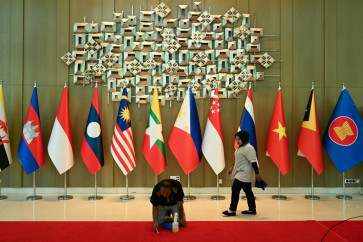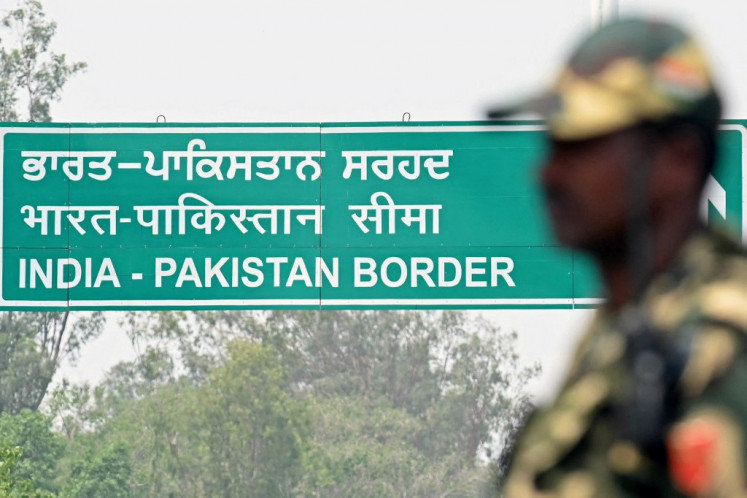Caveats in multidimensional poverty index
A commuter train heading to Tanah Abang, Central Jakarta, passes the Cideng residential area in January 2019
Change text size
Gift Premium Articles
to Anyone

A
commuter train heading to Tanah Abang, Central Jakarta, passes the Cideng residential area in January 2019. Measuring nonmonetary dimensions of poverty is still problematic in Indonesia. (JP/PJ Leo)
In the wake of the recognition that poverty is a multidimensional problem, Indonesia still favors the outdated measures of poverty based on income and consumption. While the sensible course would be to make a persuasive argument to adopt the global Multidimensional Poverty Index (MPI), this is not necessary for the time being. Indonesia is not yet proficient at the MPI and adopting it will just turn progress into broad, widespread chaos.
The poverty data of Statistics Indonesia (BPS) might provide us with information on the main determinants of consumption-based poverty in the provinces. Yet, when it comes to the non-monetary dimensions of poverty, we remain clueless.
The MPI measures deprivation in three dimensions — health, education and living standards — and looks at whether these different needs are being met. If they are, it means that people have the capability to live lives free of burdens. Another way to look at it is that, when the MPI is satisfied, people have the capability to earn an income independently. This makes focusing on the MPI as an efficient path to eradicating poverty.
When policies concentrate on improving the level of consumption, this might ease conditions in the short term, but has an insignificant impact in the long term. On top of that, the consumption-based measure does not indicate how the people’s well-being progresses over time, and whether they have attained the capability to be on their own.
South Africa’s experience offers lessons for Indonesia. A developing country with a high poverty rate, South Africa has launched the South African MPI, which uses the Alkire-Foster method of measuring multidimensional poverty, also incorporates unemployment as a fourth dimension. Unemployment in a household was found to be the main determinant of poverty in South Africa and contributes 40 percent to the MPI in 2016, higher than the national unemployment rate.
Meanwhile, although still significant, the contribution of education to the MPI in South Africa is declining due to programs and policies such as no-fee schools, compulsory education and free basic services for poor households.
Having national MPI data allows the South African government to make a focused policy response to multidimensional poverty, such as intensifying job creation specifically for the poor, while maintaining policies that have been proven to advance progress without much work, such as the free education policy.
How does the South Africa case resonate with Indonesia? Consider the BPS figure on the increase in unemployment from 6.82 million to 7.05 million in February-August 2019. Even if the growth in the labor force has contributed somewhat to the trend, it is necessary to look beyond that. Sometimes a definition has to be expanded in order for us to uncover the big picture.
Who are the unemployed in Indonesia? And who are most affected by the growing labor force? Without formal education, the poor are less valued. Despite education being the reason for their unemployability, the way to get them a job is not through education intervention, because they are no longer school-aged.
The formal sector, which generates secure jobs, is not so keen on nondegree skills. On the contrary, the informal sector that provides alternative employment values skills more than education. An unemployment reduction policy would lead to poverty reduction if it pays special attention to job creation and job security in the informal sector.
If no such differentiation is made, unemployment would keep falling, but only because the nonpoor are getting jobs and those who don’t stand a chance will remain part of the unemployment figure.
The Indonesian MPI can integrate determinants that are exclusive to the country, when the time comes — for example, by adding an unemployment dimension that incorporates the two different employment sectors (informal and formal), which have different poverty values.
Other relevant and measurable additions to the MPI include owning a phone or having internet access, which is now a fundamental daily need. It is almost impossible nowadays to do things without technology. Imagine the horror of not answering work emails for days or forgetting to submit important documents online for work, which could cost someone his/her job and hence, their livelihood. In the same vein, technology slightly, if not significantly, dictates how we meet our health and education needs
Be that as it may, Indonesia lacks the foundation to adopt the global MPI, and that is knowledge. While the state budget prioritizes health and education, it remains unclear how it improves the well-being of the poor, because how budget allocation improves the well-being of disadvantaged communities is. The lack of human resources with expertise in multidimensional poverty is a formidable hurdle, unless the country starts acting on it.
The fundamentality of knowledge in development does not need to be questioned. Take, for instance, Saudi Arabia’s Vision 2030 tourism strategy to diversify its economy and be less dependent on oil. But when the vision was introduced, the country struggled to build their capability in developing tourism from zero. Recognizing this hurdle, the Saudi government decided to invest in tourism education and training in 2016. The high growth of Saudi tourism is projected to commence in 2020, and it seems like their vision is attainable.
The Indonesian government must provide more incentives for interdisciplinary research that merge different fields in the social sciences. Sociologists can argue that the MPI should aim for equal access to needs, regardless of the level of income; geographers might look at the disparity between regions and how this should go into the formulation of Indonesia’s MPI; and economists can complement with monetary measures of poverty. The cumulative value of these different perspectives will allow us to act deliberately in designing policy that delivers a fair outcome. Forming a special task force that works on MPI research should be a consideration, if the government plans to adopt the MPI anytime soon.
Once there are enough findings and capable human resources, central and local governments, as well as the public, can sit together and finalize an empirical, research-based national MPI. Without going through these steps, Indonesia will lack the ammunition to properly adopt the MPI, and alleviating poverty in all its forms will remain a pipe dream.









